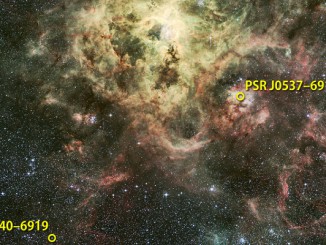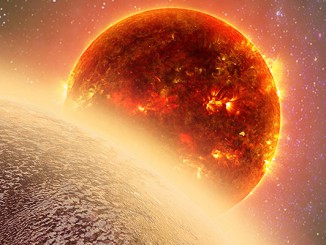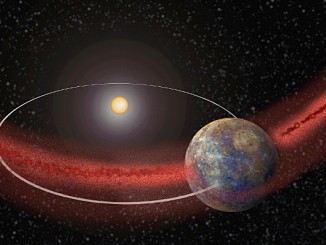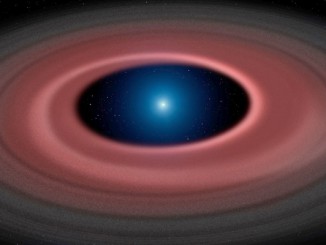
Archive


5,400mph winds hurtling around exoplanet
Wind speeds of over 2 kilometres per second have been discovered flowing around planet outside of our solar system. The University of Warwick discovery is the first time that a weather system on an exoplanet has been directly measured and mapped. The wind speed recorded is 20x greater than the fastest ever known on Earth, where it would be seven times the speed of sound.

Evidence for an impact event on main-belt asteroid Griseldis
The main-belt asteroid (493) Griseldis, that lies between the orbits of Mars and Jupiter, was probably hit by another object last March. The results were reported on 12 November at the 47th Annual Meeting of the Division for Planetary Sciences of the American Astronomical Society near Washington, DC.

Psychedelic Pluto
NASA’s New Horizons scientists made this false colour image of Pluto using a technique called principal component analysis to highlight the many subtle colour differences between Pluto’s distinct regions. The image data were collected by the spacecraft’s Ralph/MVIC colour camera on 14 July at 11:11 UTC, from a range of 22,000 miles (35,000 kilometres).

NASA’s Fermi satellite detects first gamma-ray pulsar in another galaxy
Researchers using NASA’s Fermi Gamma-ray Space Telescope have discovered the first gamma-ray pulsar in a galaxy other than our own. Known as PSR J0540-6919, the object sets a new record for the most luminous gamma-ray pulsar known. The pulsar lies in the outskirts of the Tarantula Nebula in the Large Magellanic Cloud, a small galaxy that is located 163,000 light-years away.

Oldest stars ever seen found near Milky Way centre
Astronomers have discovered the oldest stars ever seen, dating from before the Milky Way Galaxy formed, when the universe was just 300 million years old. The stars, found near the centre of the Milky Way, are surprisingly pure but contain material from an even earlier star, which died in an enormous explosion called a hypernova.

Earth-sized rocky planet found orbiting a nearby star
The collection of rocky planets orbiting distant stars has just grown by one, and the latest discovery is the most intriguing yet. Known as GJ 1132b, the newfound world lies just 39 light-years away. Although hot as an oven, the 9,200 mile-wide planet is cool enough to potentially host an atmosphere. If it does, we could study that atmosphere in detail with the Hubble Space Telescope and future observatories like the Giant Magellan Telescope.

Newly discovered dwarf planet is solar system’s most distant object
Astronomers have found a dwarf planet three times farther away from the Sun than Pluto, making it the most distant known object in the solar system. Designated V774104, the body is 500 to 1000 kilometres in diameter and is currently 15.4 billion kilometres, or 103 astronomical units (AU) from the Sun, but its exact orbit is yet to be determined.

Mercury receives a meteoroid shower from Comet Encke
The planet Mercury is being pelted regularly by bits of dust from an ancient comet, a new study has concluded. Comet Encke has the shortest period of any comet, returning to perihelion every 3.3 years. The dust from the comet affects Mercury’s tenuous atmosphere and may lead to a new understanding on how these airless bodies maintain their ethereal envelopes.

Asteroid ripped apart to form star’s glowing ring system
The remains of a fatal interaction between a dead star and its asteroid supper have been observed in detail for the first time. An international team of astronomers used the Very Large Telescope at ESO’s Paranal Observatory in Chile and other observatories to study the shattered remains of an asteroid around a stellar remnant — a white dwarf.
